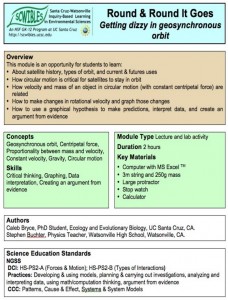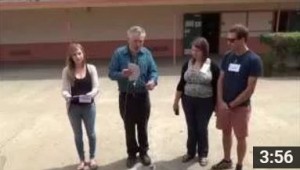 Getting Dizzy in Geosynchronous Orbit
Getting Dizzy in Geosynchronous Orbit
by Caleb Bryce and Stephen Buchter
Some satellites “hover” over one place on the earth’s surface – a geosynchronous orbit. This module introduces students to the physics behind geosynchronous orbits. Students work together to find the relationship between the radius and the velocity of an object in circular motion. They graph their data and calculate the gravitational force needed to keep a satellite in geosynchronous orbit.
Students learn: 1) How circular motion is critical for satellites to stay in orbit, 2) How velocity and mass of an object in circular motion are related, and 4) How to use a graphical hypothesis to make predictions, interpret data, and create an argument from evidence.
Docs: fulltext.docx lecture.pptx prequiz.pptx quiz.pptx quizkey.pptx vandrlect.pptx
Keywords: argument, cause, data, geosynchronous, investigations, math, models, patterns, HS-PS2.A, HS-PS2.B, radius, systems, velocity

